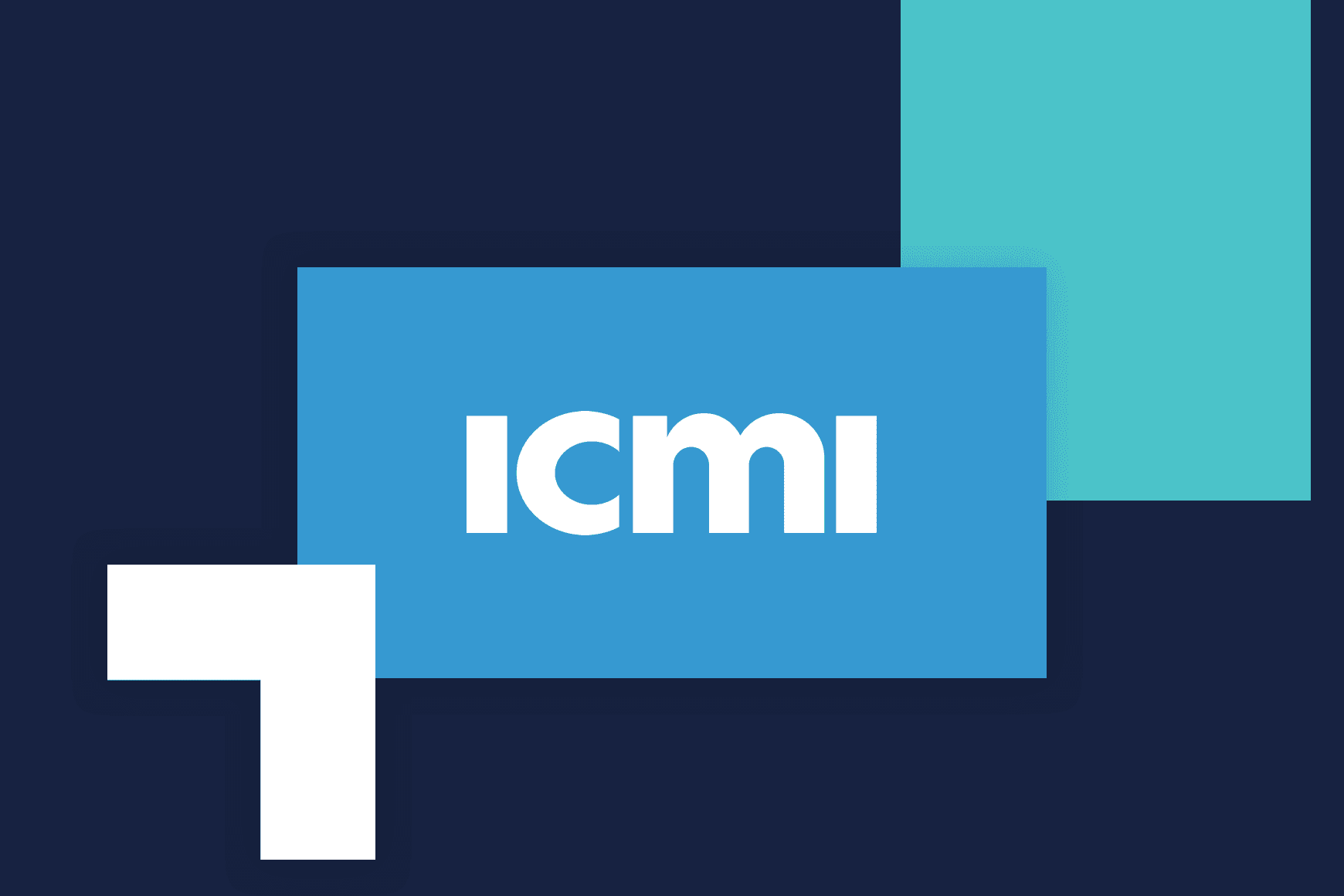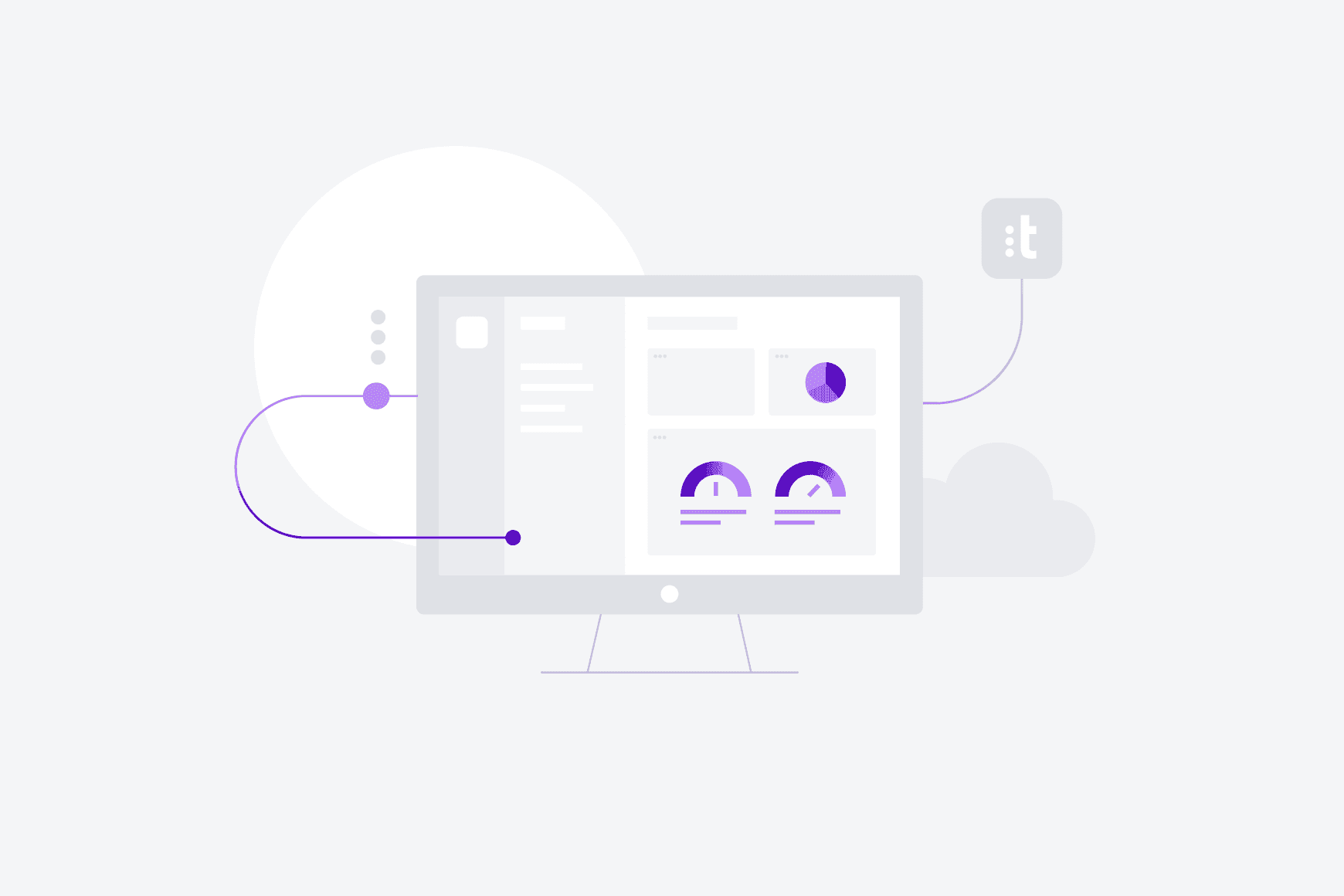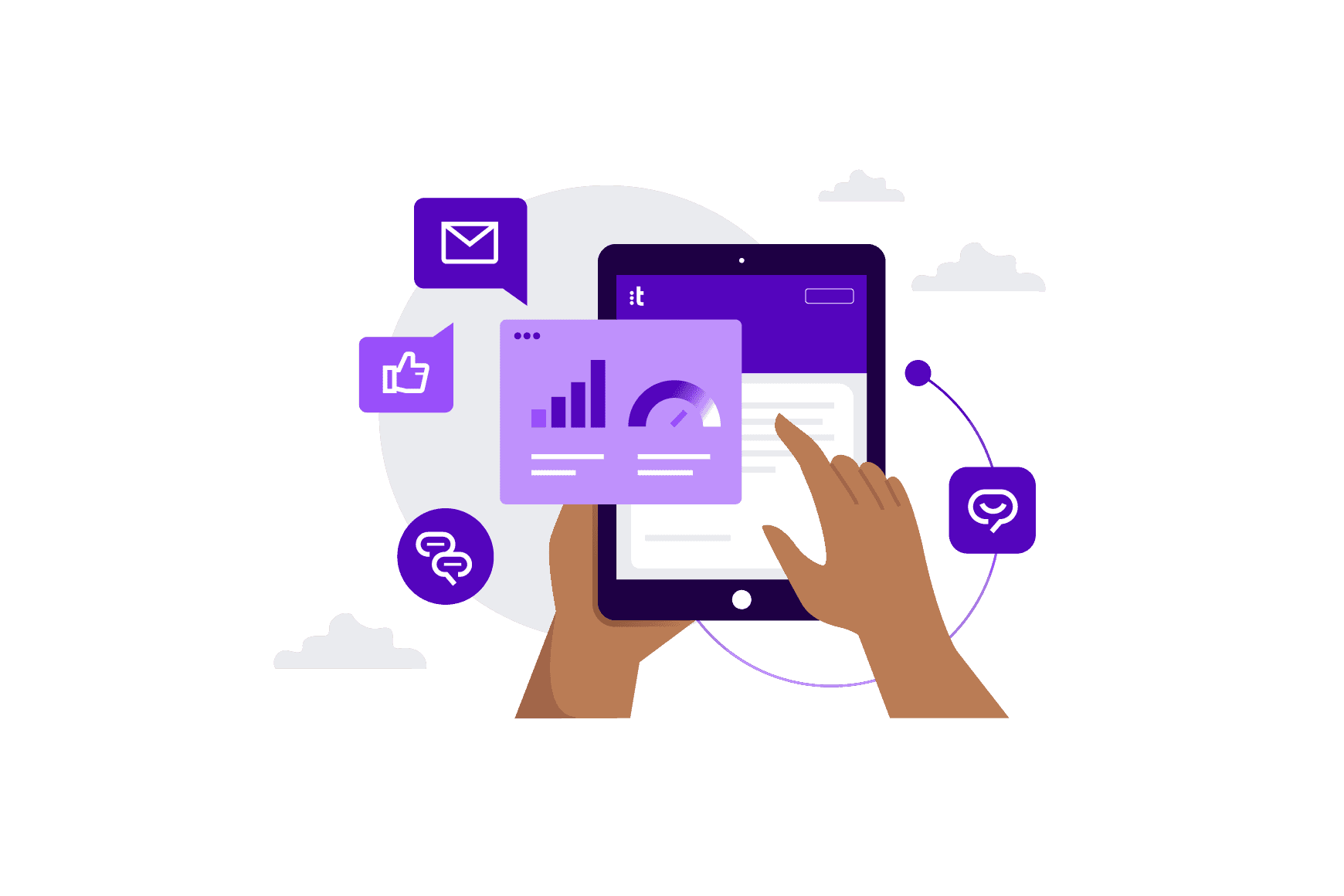Contact Center Trends
Call center acronyms and definitions: the ultimate list

Call center acronyms you need to know
Below is a list of the most common call center acronyms along with their definition. From cloud contact center software acronyms to telephony and more, this comprehensive list can serve as your go-to source when you are left scratching your head over a collection of letters.
Call center acronyms and definitions:
A – Call center acronyms starting with A
ACD – Automatic Call Distributor
Automatic Call Distributor (ACD) is a telephony software system that answers incoming calls and routes them to a specific agent or department within a company.
ACW – After Call Work
After-Call-Work (ACW) is the average amount of time an agent takes to wrap-up a call.
AHT – Average Handle Time
Average Handle Time (AHT) is the average duration of an interaction between a customer service agent and customer.
ANI – Automatic Number Identification
Automatic Number Identification (ANI) is a telephony software system that allows the receiver of a phone call to capture and display the phone number of the phone that originated the call.
API – Application Program Interface
Application Program Interface (API) is a software intermediary that allows two applications to talk to each other. In the contact center environment, they are often used to provide agents with information from several different databases in one application.
ASA – Average Speed of Answer
Average Speed of Answer (ASA) is the average number of seconds it takes for a call to be answered.
ASP – Application Service Provider
An Application Service Provider (ASP) is a company that provides software applications to customers over the Internet, otherwise known as “software as a service” (SaaS).
ASR – Automatic Speech Recognition
Automatic Speech Recognition (ASR) is technology that allows human beings to use their voices to speak with a computer interface in a conversational way.
ATA – Average Time of Abandonment
Average Time of Abandonment (ATA) is the average length of time that a caller will stay in a queue before they hang up the call.
B – Call center acronyms starting with B
BPO – Business Process Outsourcing
Business Process Outsourcing (BPO) is outsourcing some aspect of your business’s operations to a third-party vendor or service provider.
BC/DR – Business Continuity/Disaster Recovery
Business Continuity and Disaster Recovery (BC/DR) are plans and practices put into place that support an organization’s ability to stay operational after an adverse event.
BCP – Business Continuity Planning
Business Continuity Planning (BCP) is planning for all possible scenarios to ensure your call center can continue in the midst of an unexpected issue or event.
BI – Business Intelligence
Business intelligence (BI) is a combination of analytics, data mining, data visualization, data tools and infrastructure to help call centers to make more data-driven decisions and improve agent efficiency and the customer experience.
BIC – Best-in-Class
Best-in-Class (BIC) is something that has been designated by management as the preferred solution, standard, etc.
C – Call center acronyms starting with C
CCR – Customer Controlled Routing
Customer Controlled Routing (CCR) is the process of customizing customer experience by routing incoming calls to specific agents trained to address the customer’s specific issue.
CDR – Call Detail Record
Call Detail Record (CDR) is a data record that documents the details of a telephone call or other telecommunications transaction (text message, ) that passes through that facility or device.
CED – Caller Entered Digits
Caller Entered Digits (CED) are any digits callers enter using their telephone keypads.
CEM – Customer Experience Management
Customer experience management (CEM) is the practice of designing and reacting to customer interactions to meet or exceed their expectations, leading to greater customer satisfaction, loyalty and advocacy.
CIS – Customer Information System
Customer Information System (CIS) is the system containing all data pertaining to all customer premises, including addresses, billing determinants and historical data.
CLI – Calling Line Identity
Calling Line Identity (CLI) is essentially caller ID. It allows the person receiving the call to see the caller’s number.
CMS – Call Management System
Call Management System (CMS) is a software product for organizations that receive a large volume of telephone calls. Features often include collecting call-traffic data, creating management reports and providing an administrative interface.
CRM – Customer Relationship Management
Customer Relationship Management (CRM) is all techniques, tools, and technologies used by organizations for developing, retaining and acquiring customers.
CSAT – Customer Satisfaction
Customer Satisfaction (CSAT) is a score that indicates how satisfied a customer is with a specific product, transaction, or interaction with a company. The term “CSAT” is most often used in the context of a “CSAT score,” which describes a numerical measure of customer satisfaction.
CSR – Customer Service Representative
Customer Service Representative (CSR) is anyone who interacts with customers. They handle complaints, process orders, and provide information about an organization’s products and services.
CTI – Computer Telephony Integration
Computer Telephony Integration (CTI) is used by call centers handling a large number of incoming calls. CTI uses computers to manage all telephone calls allowing for increased efficiency and better results.
D – Call center acronyms starting with D
DID – Direct Inward Dialing
Direct Inward Dialing (DID) is a telephone service that allows a phone number to ring through directly to a specific phone within the organization instead of going to a menu or a queue and needing to dial an extension.
DNIS – Dialed Number Identification Service
Dialed Number Identification Service (DNIS) identifies the originally dialed telephone number of an inbound call.
DSL – Digital Subscriber Line
Digital Subscriber Line (DSL) uses existing telephone lines to transport high-bandwidth data, such as multimedia and video, to service subscribers.
E – Call center acronyms starting with E
EAI – Enterprise Application Integration
Enterprise Application Integration (EAI) is the use of software and computer systems’ architectural principles to integrate a set of enterprise computer applications.
ERMS – Email Response Management System
Email Response Management System (ERMS) is a set of programs that automatically handles email messages and attachments according to user-defined rules.
ERP – Enterprise Resource Planning
Enterprise resource planning (ERP) is the integrated management of call center business processes, often in real time and mediated by software and technology.
EWT – Expected Wait Time
Expected Wait Time (EWT) is the predicted amount of time an interaction has to wait in a queue before being answered.
F – Call center acronyms starting with F
FCR – First Call Resolution
First Call Resolution (FCR) is resolving a customer problem, question or need the first time they call, with no follow-up required.
FCRR – First Call Resolution Rate
First Call Resolution Rate (FCRR) is a popular call center metric that measures the percentage of calls where the customer problem, question or need was resolved the first time they called.
FTE – Full Time Equivalent
Full Time Equivalent (FTE) is equal to the number of total scheduled person hours divided by the number of hours per week which constitute a full-time person. For example, FTE may consist of several part-time individuals whose combined work hours in a week equal the full-time person.
G – Call center acronyms starting with G
GOS – Grade of Service
Grade of Service (GOS) is a metric that measures the percentage of calls or customer interactions answered within a given time period. It’s typically used to help call centers determine the amount of staff they need to provide an exceptional level of service.
I – Call center acronyms starting with I
INS – Intelligent Network Service
Intelligent Network Service (INS) helps to distribute calls to multiple destinations present in a virtual call center network.
ISDN – Integrated Services Digital Network
Integrated Services Digital Network (ISDN) is a circuit-switched telephone network system that provides access to packet switched networks that allows digital transmission of voice and data.
ISP – Internet Service Provider
Internet Service Provider (ISP) is the industry term for the company that is able to provide you with access to the Internet.
IVR – Interactive Voice Response
Interactive Voice Response (IVR) is a telephony menu system that enables the dial pad for identification, segmentation and routing of callers to the most appropriate agent within your team.
IXC – Interexchange Carrier
Interexchange Carrier (IXC) is a legal term for a telecommunication company. It is defined as any carrier that provides services across multiple local access and transport areas.
K – Call center acronyms starting with K
KB – Knowledge Base
A Knowledge Base (KB) is a published collection of documentation that typically includes answers to frequently asked questions, how-to guides, and troubleshooting instructions.
KM – Knowledge Management
Knowledge Management (KM) is the process of creating, sharing, using and managing the knowledge and information of an organization.
KPI – Key Performance Indicator
A Key Performance Indicator (KPI) is a measurable value that demonstrates how effectively a contact center is achieving key business objectives.
L – Call center acronyms starting with L
LOA – Least Occupied Agent
The Least Occupied Agent (LOA) is the agent with the lowest occupancy rate, which is the ratio between the time the agent has been busy compared to the agent’s total time available.
LAN – Local Area Network
A local area network (LAN) is a computer network that interconnects computers within a limited area such as a residence, school, laboratory, university campus or office building.
M – Call center acronyms starting with M
MIA – Most Idle Agent
The Most Idle Agent (MIA) is a call center agent who is available and ready to take calls.
MMR – Multimedia Routing
Multimedia Routing (MMR) is technology that allows for the creation of routing workflows for all media. This provides a consistent routing experience across all channels (SMS, email, video, etc).
N – Call center acronyms starting with N
NSP – Network Service Provider
A Network Service Provider (NSP) is a business or organization that sells bandwidth or network access by providing direct Internet backbone access to internet service providers and usually access to its network access points (NAPs).
O – Call center acronyms starting with O
OAM – Operations, Administration and Maintenance
Operations, Administration and Maintenance (OAM) are the processes, activities, tools, and standards involved with operating, administering, managing and maintaining a contact center system.
OJT – On the Job Training
On-the Job Training (OJT) is training that teaches a paid employee the knowledge and skills necessary to perform the job and is provided while they are engaged in productive work.
OPA – Off Phone Activity
Off Phone Activity (OPA) is any task, responsibility, or activity completed by a call center agent that does not involve being on the phone or handling communication from customers.
OSI – Open System Interconnector
Open System Interconnector (OSI) provides a standard for different computer systems to be able to communicate with each other.
P – Call center acronyms starting with P
PABX – Private Automatic Branch Exchange
Private Automatic Branch Exchange (PABX) is a call center solution that allows companies to use a single access number that has several extensions. The benefit of a PABX is that it’s often cheaper than using many landlines linked to the public network.
PBX – Private Branch Exchange
Private Brand Exchange (PBX) is a telephone network that is owned, operated, and used within a single organization.
PCP – Post Call Processing
Post Call Processing (PCP) is the duration of time spent between two successive calls and includes the time that a call center agent takes to perform the post call formalities like filling out necessary forms and notating customer records.
PSTN – Public Switched Telephone Network
Public Switched Telephone Network (PSTN) is inclusive of the world’s circuit-switched telephone networks that are operated by national, regional, or local telephony operators. It consists of telephone lines, fiber optic cables, cellular networks, communications satellites, and undersea telephone cables, all interconnected by switching centers, which allows most telephones to communicate with each other.
Q – Call center acronyms starting with Q
QA – Quality Assurance
Quality Assurance (QA) is the process of measuring the overall performance of agents and then using that data to determine if the level of service meets customer expectations. The data gathered is used to make improvements to processes in an effort to optimize the customer experience.
QM – Quality Monitoring
Quality Monitoring (QM) is technology that helps a call center analyze and track agent performance across all customer interactions to ensure standards of service are being met.
QoS – Quality of Service
Quality of Service (QoS) is inclusive of any process or protocol that monitors data traffic to ensure that certain streams of data are prioritized to provide a guaranteed level of service to customers. For example, voice data streams are often prioritized in call centers in order to provide callers and agents with a crystal clear connection.
R – Call center acronyms starting with R
RFI – Request for Information
Request for Information (RFI) is a preliminary informative document requested by companies that have no prior experience with a product or software and need to gain an understanding of the range of options available to them.
RFP – Request for Proposal
Request for Proposal (RFP) is a document that requests vendors to propose solutions to a customer’s problems or business requirements. An RFP typically follows an RFI.
RNA – Ring No Answer
Ring No Answer (RNA) is the duration an initiated call rings at the destination before being classified as a ‘No Answer.’
ROI – Return on Investment
Return on Investment (ROI) is a performance measurement used to evaluate the amount of return on a particular investment relative to the investment’s cost.
S – Call center acronyms starting with S
SaaS – Software as a Service
Software as a Service (SaaS) is a software licensing and delivery model in which software is licensed on a subscription basis and is centrally hosted. Cloud Contact Center software is a perfect example of SaaS.
SA – Speech Analytics
Speech Analytics (SA) is the process of analyzing recorded calls to gather customer information to improve communication and future interaction.
SBR – Skill-Based Routing
Skill-Based Routing (SBR) is a call-assignment strategy used in contact centers to assign incoming calls to the most suitable agent, instead of simply choosing the next available agent.
SFA – Sales Force Automation
Sales Force Automation (SFA) is a system designed to improve sales productivity by automating various sales processes like making calls, sending emails, leaving messaging, or noting interaction details in CRM tools.
SIP – Session Initiation Protocol
Session Initiation Protocol (SIP) is a signaling protocol used for initiating, maintaining, and terminating real-time sessions that include voice, video and messaging applications.
SL – Service Level
Service Level (SL) measures the performance of a system. Certain goals are defined and the service level gives the percentage to which those goals should be achieved.
SLA – Service Level Agreement
Service Level Agreement (SLA) is the level of service you expect from a vendor, laying out the metrics by which service is measured, as well as remedies or penalties should agreed-on service levels not be achieved.
T – Call center acronyms starting with T
TAPI – Telephony Applications Programming Interface
Telephony Applications Programming Interface (TAPI) is a Microsoft Windows API, which provides computer telephony integration and enables PCs running Microsoft Windows to use telephone services.
TCO – Total Cost of Ownership
Total Cost of Ownership (TCO) includes the purchase price of a particular system, software, hardware, asset, plus operating costs over the asset’s lifespan.
TTS – Text to Speech
Text to Speech (TTS) is a form of speech synthesis used to create a spoken version of the text in an electronic document.
U – Call center acronyms starting with U
UC – Unified Communications
Unified Communications (UC) is the integration of enterprise communication services such as instant messaging, voice (including IP telephony), audio, and web & video conferencing with non-real-time communication services such as unified messaging (integrated voicemail, e-mail and SMS).
UCD – Uniform Call Distributor
A Uniform Call Distributor (UCD) system automatically delivers each incoming call to the next available agent’s line through rotation of lines rather than always starting at the first agent/line in a group of agents/lines.
V – Call center acronyms starting with V
VoIP – Voice Over Internet Protocol
Voice Over Internet Protocol (VoIP) is a technology that delivers voice communication and multimedia sessions (such as video) over Internet Protocol (IP) networks.
VPN – Virtual Private Network
A Virtual Private Network (VPN) extends a private network across a public network and allows users to send and receive data across shared or public networks as if their computing devices were directly connected to the private network.
VRU – Voice Response Unit
Voice Response Unit (VRU) is an automated telephone answering system consisting of hardware and software that allows the caller to navigate through a series of prerecorded messages and use a menu of options through the buttons on a touch-tone telephone or through voice recognition.
W – Call center acronyms starting with W
WAN – Wide Area Network
Wide Area Network (WAN) is a telecommunications network that extends over a large geographic area for the primary purpose of computer networking.
WFM – Workforce Management
Workforce Management (WFM) is a combination of processes that maximizes performance levels and competency for an organization.It includes all the activities needed to maintain a productive workforce, such as field service management, human resource management, performance and training management, data collection, recruiting, budgeting, forecasting, scheduling and analytics.
WFO – Workforce Optimization
Workforce Optimization (WFO) is used by call centers to improve workforce management. It integrates business performance considerations with workforce management, and involves automating processes, data visibility, compliance on legislation and solving business problems related to staffing.
Bookmark our comprehensive list of call center acronyms
Be sure to bookmark this page so that you’ll have a reference when that next call center acronym comes your way.
If this post made you realize you are missing out on some key call center software features or functionality, click the button below for a live demo of the world’s leading cloud-based call center software solution.

![[object Object]](/de-de/_next/image/?url=https%3A%2F%2Fcms.talkdeskqa.com%2Fapp%2Fthemes%2Ftalkdesk-com%2Fassets%2Fimages%2Flogos%2F&w=3840&q=50)
Official Guide to Contact Center Terms in 2019
We partnered with ICMI to put together this guide of the latest contact center terms being used in 2019 so you can continue transforming your contact center and elevating your customer experience throughout the year.


